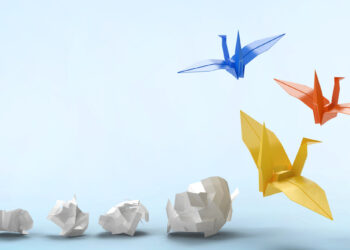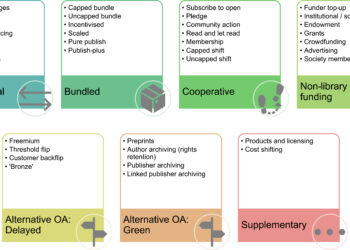
By now, you’ve likely heard of Adam Mansbach’s new work, “Go the F**k to Sleep”, a sly parody of an early childhood bedtime book which is tearing up Amazon’s sales chart. The success of the book, which is not scheduled to be released until mid-June, seems to have caught much of the industry and commentators by surprise. The reason for this overwhelming success? According to some . . .
Piracy sends “Go the F**k to Sleep” to #1 on Amazon
Mark reviewed a funny parody of a kid’s picture book called Go the F**k to Sleep late last month, and it’s since gone to be the number one bestseller on Amazon. Except, it hasn’t been published yet. It’s reached the number one slot on the strength of pre-orders.
How did this remarkable thing occur? Piracy.
A small number of booksellers were sent a PDF version of the book as an early promotion. This PDF has now “gone viral” and been emailed countless times. The traditional publishing ideas about piracy would likely see this as a disaster–the entire contents of a book widely distributed before the book is available through legitimate channels would raise fears that sales would be squelched. But the opposite has happened here:
“My wife, like, got it from this guy she works with, who, like, got it from his wife, who went to school with this dude who works at [REDACTED].” I can only imagine that stories like these will be multipying in the coming months. . . . After seeing the PDF, I went online and preordered a bunch to give my pregnant friends.
Does the remarkable success of this one book overturn the conventional wisdom about piracy? Should this be widely adopted as a marketing strategy? Is piracy really the driving force behind the sales of “Go the F**k to Sleep”?
Although the spread of the PDF version of this book is indeed a fact (I personally have received it from three different people), it’s difficult to separate coincidence from causation as far as the high level of sales. The book is a smart and funny (if entirely one-note) joke that hits home for any parent. Before and during the spread of the PDF, the book was receiving a great deal of publicity, having been featured on one of the most widely read blogs on earth. It’s the perfect sort of thing that people like to share with friends online. The great word-of-mouth is clearly driving sales. But how much of that was dependent on including a copy of the entire work?
Many of those commenting on the linked articles above provide anecdotal evidence that they bought the book before receiving the PDF version. I know that before I was sent the PDF, I had seen coverage of the book in several places and was considering purchasing it as a gift for expecting friends. Those same friends then emailed a copy of the PDF to me, and, at least in my case, lost the publisher a sale as the surprise and the humor of the gift had been ruined. The enormous level of publicity the book has received (and this article now counts as part of that) means that it potentially would have seen a high sales level without any piracy.
The PDF did increase the level of publicity. Like Cory Doctorow, who built a career on being a talented writer but is an even more talented publicist, the novelty of the situation — of a book where the contents were freely available — garnered far more press coverage than similar or even superior books. This book has been noted for its viral PDF in the New York Times, The New Yorker, Fast Company, The Bay Citizen, and on popular blogs like BoingBoing, The Daily What, and Kottke.org, to name but a few. When was the last time a children’s book received that level of notice?
And that’s one of the problems with considering this as a general marketing scheme. It works for a limited period of time, when the approach is novel. Doctorow gained great fame by giving his books away for free. The next author to do so gained a little less attention, and so on down the line. But beyond the question of attention given to novelty, this is not a typical book, and the purchasing pattern seen here is not likely to be replicated for other books, movies or music.
A picture book is an object.
The digital image is not a real replacement for the object any more than seeing a picture of Mt. Rushmore is the same as seeing it in person.People hold up examples of things being given away and then resulting in real income. Radiohead, Monty Python, and now this. But for the most part, these are special cases, largely just the fact that such acts are at this point in time still a novelty.
It’s a very basic economic fact that while a person may be altruistic, a market full of people will seek the lowest price for a good they want.
People will buy this because they want the physical book, and partially because they want to support the author. This doesn’t translate very well to movies and music where the physical object isn’t as much part of the experience, and it won’t translate into the future when the novelty of free has worn off.
This is a product whose very nature requires that it be a physical object. As part of an insightful essay on why this book resonates with so many people, a pseudonymous blogger notes that it “mocks a format while also embracing it (giving meaning to owning a physical copy).” The very adult humor found in the book works because it is encased in an incongruous format, that of a children’s book. It provides a totem object for the suffering parent, to prove that, yes, they still have a sense of humor and that their suffering is universal.
It’s also an object likely to be purchased as a gift for new parents. That requires ownership of the physical object — one can’t show up at a baby shower and present the prospective mother with a PDF.
A good analogy might be found in Cory Doctorow’s recent stab at self-publishing. While paperback sales of the book (which was freely available electronically) were “rotten,” Doctorow made a killing selling a lavish $275 limited edition. This perhaps readily shows the difference between a product where the content is all that matters and one where the physical object is central.
In the end, the lesson here is a mixed one:
Piracy can hurt publishers, but it can also help them. Call it the double-edged cutlass. . . . The multi-billion-dollar question, though, is this: When does piracy work to a publisher’s benefit, and when does it work to its detriment?
Clearly, in the case of “Go the F**k to Sleep,” the viral spread of a pirated copy has turned into a brilliant marketing plan, if an entirely inadvertent one. It’s likely that there are other products that may benefit from a similar campaign, but their number is limited, and the value of seeding the market with a pirated copy is dependent on the nature of the product itself, and whether ownership of the real thing provides any tangible benefit. It is, however, a great example of the power of word-of-mouth marketing and how that is exponentially enabled by social media.
It’s also a good sign for content creators. We are living in an era where Netflix streaming has replaced peer-to-peer filesharing as the major usage of bandwidth, where an app developer realized better sales by getting rid of the free version of his product. There does indeed seem to be a real market of buyers willing to pay for goods even when those goods are offered for free through other channels.
Piracy will always be with us, but we may be seeing the first glimpses of the post-piracy era, where convenience and quality outweigh the ability to get something for free through back channels.


